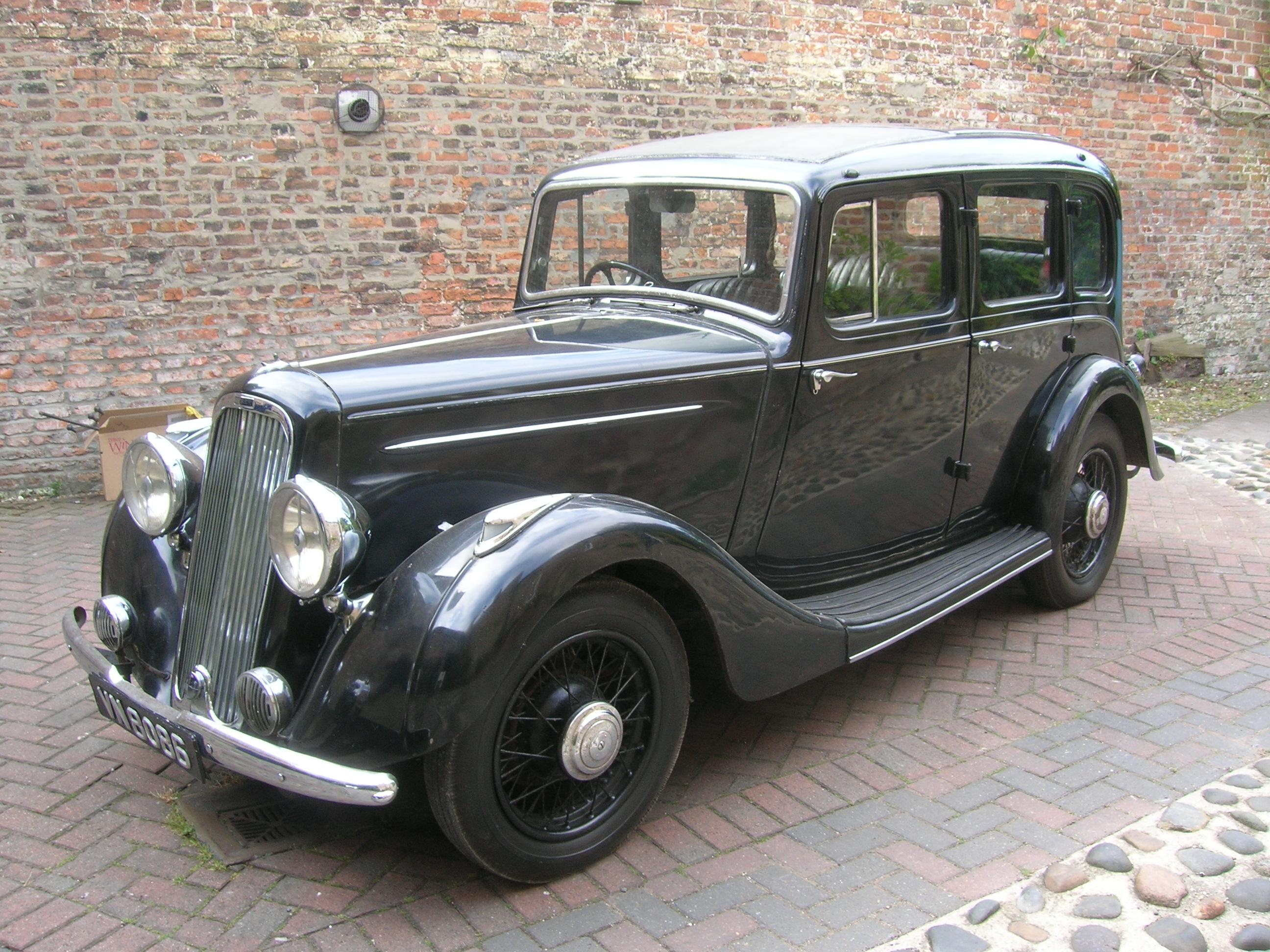I can’t really see the one in the back corner of the showroom, but we have a ragtop Austin A90 Atlantic in the front, and a Triumph saloon facing the camera. The Triumph was registered in the County Borough of Sheffield, in January 1951. At that date it will be a Renown Mk1, using the same design of 2088cc engine and three speed column change gearbox that you would find in the contemporary Standard Vanguard, reliable, but not very exciting on 68bhp.
The Austin was only produced as a convertible in 1949 and 1950, and the hardtop version in 1950 to 52. It was aimed at the USA, where it didn’t sell because it was too small, so they tried to sell it in UK, but it was too big. The 2.7 litre 4 cylinder engine went on to redeem itself in the Austin Healey 100/4, but there was no redemption for the rest of the car, so production, even of the hardtop version, had stopped by 1952.
Not one of Leonard Lord’s better ideas, at that time Americans bought American cars, Brits bought small cars, this was neither, and pug ugly as well.
P.S. With the iPad brightness turned up to Regulo 11, the lurker in the back corner is, I think, a Vauxhall Wyvern or Velox from the late 40s or very early 50s. This was a 1938 car design dressed up with a new front end and curved boot to preserve sales until the new models were available.
 I had one of these. one day in a Bham city multi-car park i parked it went shopping. on return, i went to the floor where i left it. it was not there, i looked around no way. so i went to the police and told them my car had been stolen. At 7OCLOCK that night i had a call from the police. telling me my car was on level 3 one floor above.were i thought i had left it. WHAT A PLONKER
I had one of these. one day in a Bham city multi-car park i parked it went shopping. on return, i went to the floor where i left it. it was not there, i looked around no way. so i went to the police and told them my car had been stolen. At 7OCLOCK that night i had a call from the police. telling me my car was on level 3 one floor above.were i thought i had left it. WHAT A PLONKER







